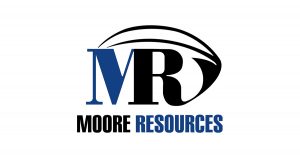How to Prevent Workplace Injuries

Photo by Christopher Burns on Unsplash
Revenues, profit margins, debt ratios and tax implications are often the emphasis of young entrepreneurs and generally the focal point of running a business. However, one topic just as important that is not generally featured in Business Management 101 is workplace safety. The topic of workplace safety may generate a few eyebrow raises when discussed with investors and probably prompts a few eye rolls during staff meetings, but look no further than the story of Paul O’Neill and his role as the CEO of Alcoa to depict a clear picture of how deeply rooted workplace safety is within the fabric of successful companies.
The story of Paul O’Neill’s tenure at Alcoa has been highlighted in books and articles over the years as he made a bold proclamation during is introductory speech to investors who were more worried about the bottom line than employee safety. However, O’Neil knew the impact of workplace injuries and that changing their organizational habit to focus on safety would pay huge dividends for his publicly traded company.
Impact of Workplace Injuries
The impact of workplace accidents should not be overlooked by companies large or small. Nobody wants to see their employees experience bodily harm, and the thought is enough to make managers lose sleep. However, many business leaders fail to realize the deeper impacts that these workplace accidents create.
Employee injuries have a ripple effect through a company’s culture. The immediate impact is a loss of productivity and a disruption of staff. Companies are forced to continue operations short-handed by way of paying overtime to employees to cover lost shifts or by spending resources on hiring and training. Moreover, the wave of subconscious disincentive can be generated, deflating employee morale and causing a sharp loss of motivation throughout the workforce. Employees should never feel unsafe in a workplace or underappreciated, but when they do productivity is sure to take a hit.
Businesses that fail to promote a safe workplace and lack proper risk management also incur financial and occasionally legal woes. Workers Compensation insurance is put in place to protect businesses from workplace accidents and claims can be filed to trigger coverage when a work-related injury or illness arises. There are several degrees of coverage that are provided by workers comp insurance including medical and rehabilitation costs, wage compensation paid to an injured employee, and in the worst cases, death benefits paid to surviving dependents. However, these insurance benefits are paid out to the employee at, quite literally, a premium to the business.
As workers compensation claims mount, the experience modification factor (MOD Factor) is calculated by the National Council of Compensation Insurance. Essentially this is a company’s safety score and is calculated based on the amount of premium paid into workers compensation insurance in comparison to the cost of the claims that have been paid out by their insurance carrier. As a company’s score increases, it directly modifies the rate that they pay for workers comp insurance. For instance, a company with recent claims activity may have a 1.5 multiplier assessed, thus increasing their workers compensation premium by 50%. Additionally, companies with frequent claims issues often have trouble finding an insurance carrier to cover them and can be forced into assigned risk pools where a bevy of fees and increased costs are assessed.
Aside from the impact on policy premium, business owners who fail to procure workers comp insurance can be held personally liability and even jailed in some states for not providing the adequate protections. The best practices for business owners are to institute workplace safety standards to prevent injuries and enact workers compensation coverage (even if state law doesn’t require it) to protect against the random occurrence of an injury.
Ways to Prevent Workplace Injuries
The focal point of a safe workplace is prevention, which requires an emphasis on safety starting at the top of the cooperate hierarchy and conveyed consistently throughout the company. Here are 10 common recommendations for building a safe workplace:
- Implement a formal safety plan. Promoting safety awareness and education should be paramount. By engaging management and employees to focus on safety, routine hazards can be commonly reported, and employees will seriously consider risks and take proper precautions.
- Conduct operational risk management. By initially investigating operations, business owners can pinpoint vulnerabilities and take corrective action. Make sure hazardous areas are identified and preventative methods are enacted.
- Perform Pre-Hire Screenings. In some cases, accidents are caused by an employee’s lack of experience or inept physical capabilities. By screening employees with pre-hire physicals and drug testing, companies can make a better determination of an applicant’s ability to perform job duties prior to making the hire.
- Conduct thorough initial training and provide continuing education. Continually educate employees on the importance of safety as well as the proper techniques for completing their assigned tasks. Additional instruction on personal wellness is also recommended for a health workforce.
- Routinely inspect machinery and vehicles. Inspect machinery for malfunctions or potential risks. Openly communicating these conditions with employees is a great way to identify potential issues before an accident occurs.
- Provide protective safety equipment. Providing the proper equipment for employees to operate safely is a must. Employees need to feel comfortable that they are using quality protective devices such as goggles, hard hats, non-slip shoes, ear protection, etc.
- Enforce proper attire. Simply having safety equipment on site is not enough to change a culture. Proper attire and equipment utilization must be regularly enforced by management.
- Create an organized workplace. Ensure that jobsites have proper lighting and ventilation. The workplace should be free of debris and tools should be orderly to avoid trips and falls. Spills should be contained and cleaned immediately with cleanup equipment readily available.
- Maintain proper staff levels. Over-exerted employees are more likely to cut corners or ignore safety protocol. Hiring part-time staff can not only save on overtime costs but can also significantly reduce workplace accidents attributed to exhaustion.
- Regularly review and improve the safety program. Safety programs should be a cyclical process with regular review and improvements added where needed. The best way to constantly identify deficiencies is to promote and open dialog with employees about potential hazards and the importance of their safety.
Taking the proper precaution and implementing a formal safety program is an important part of maintaining a safe workplace. Unfortunately, accidents can occur regardless of an employee’s care and concern for safety. When workplace injuries arise, it is important to immediately report them to your workers comp carrier and get the injured employee the proper care that they need.
If you are in need of Workers Compensation Insurance or have questions regarding the affects of a formal safety program on your workers compensation insurance, please do not hesitate to contact a Moore Resources insurance agent to discuss.

Moore Resources is an Independent Insurance Agency located in St. Petersburg, FL and offering Homeowners Insurance, Auto Insurance, Personal Insurance and Business Insurance. Our reach extends beyond the Tampa Bay area to the entire state of Florida. Moore Resources has regionally been dedicated to serving the local residents of Pinellas, Hillsborough, Polk, Pasco, Manatee and Sarasota counties; including St. Pete, Tampa, Clearwater, Bradenton, Brandon, Dunedin, Gulfport, Lakeland, Largo, Lutz, Palm Harbor, Pinellas Park, Riverview, Ruskin, Seffner, Seminole, Temple Terrace, Tierra Verde, Town n Country, and the Gulf Coast Beaches.
The purpose of this blog is to present general information only. It does not interpret specific policies or coverage. To obtain detailed information regarding your insurance, contact a licensed insurance agent.












